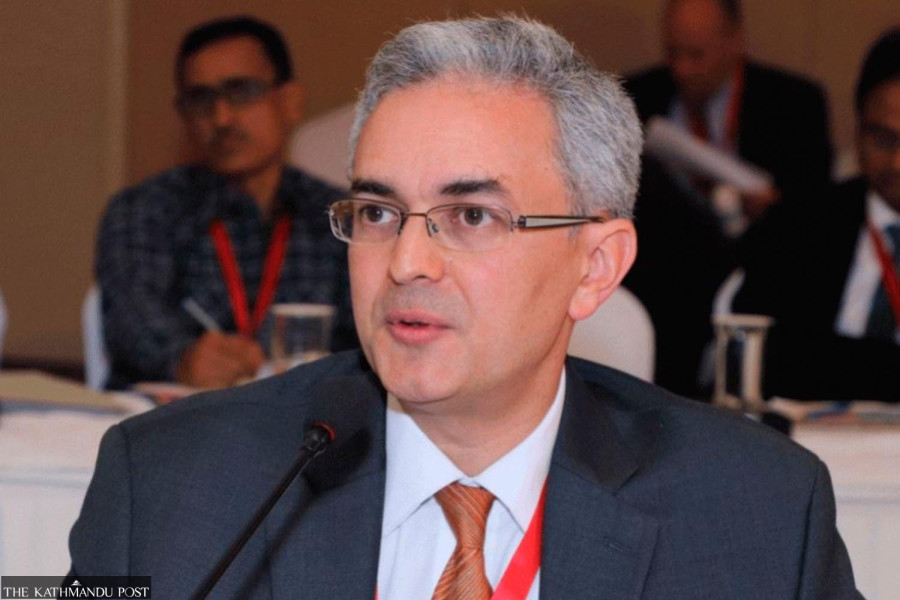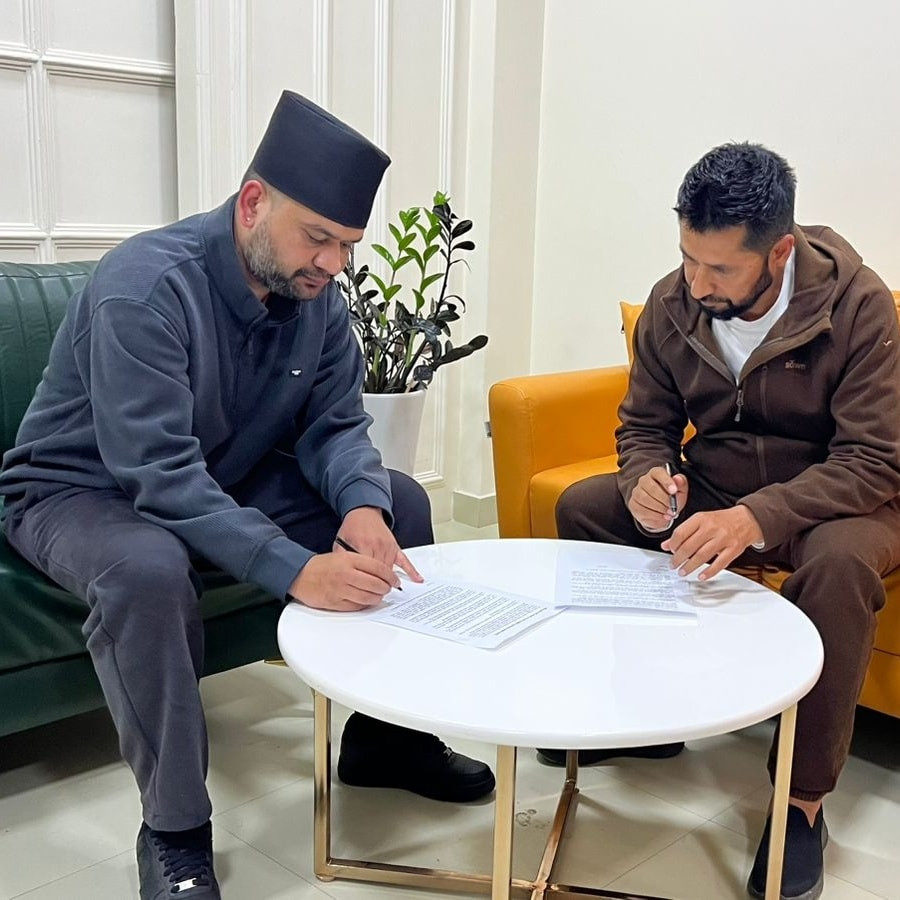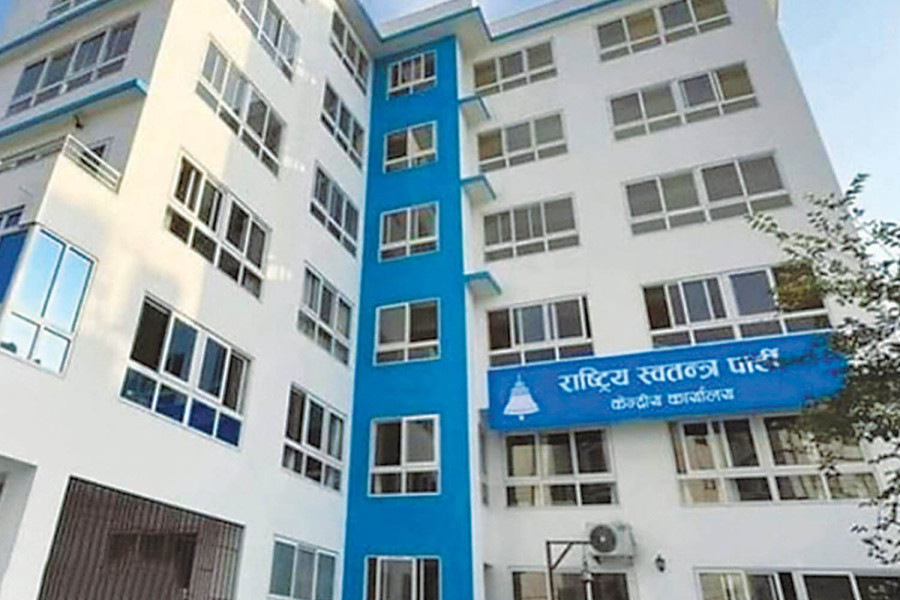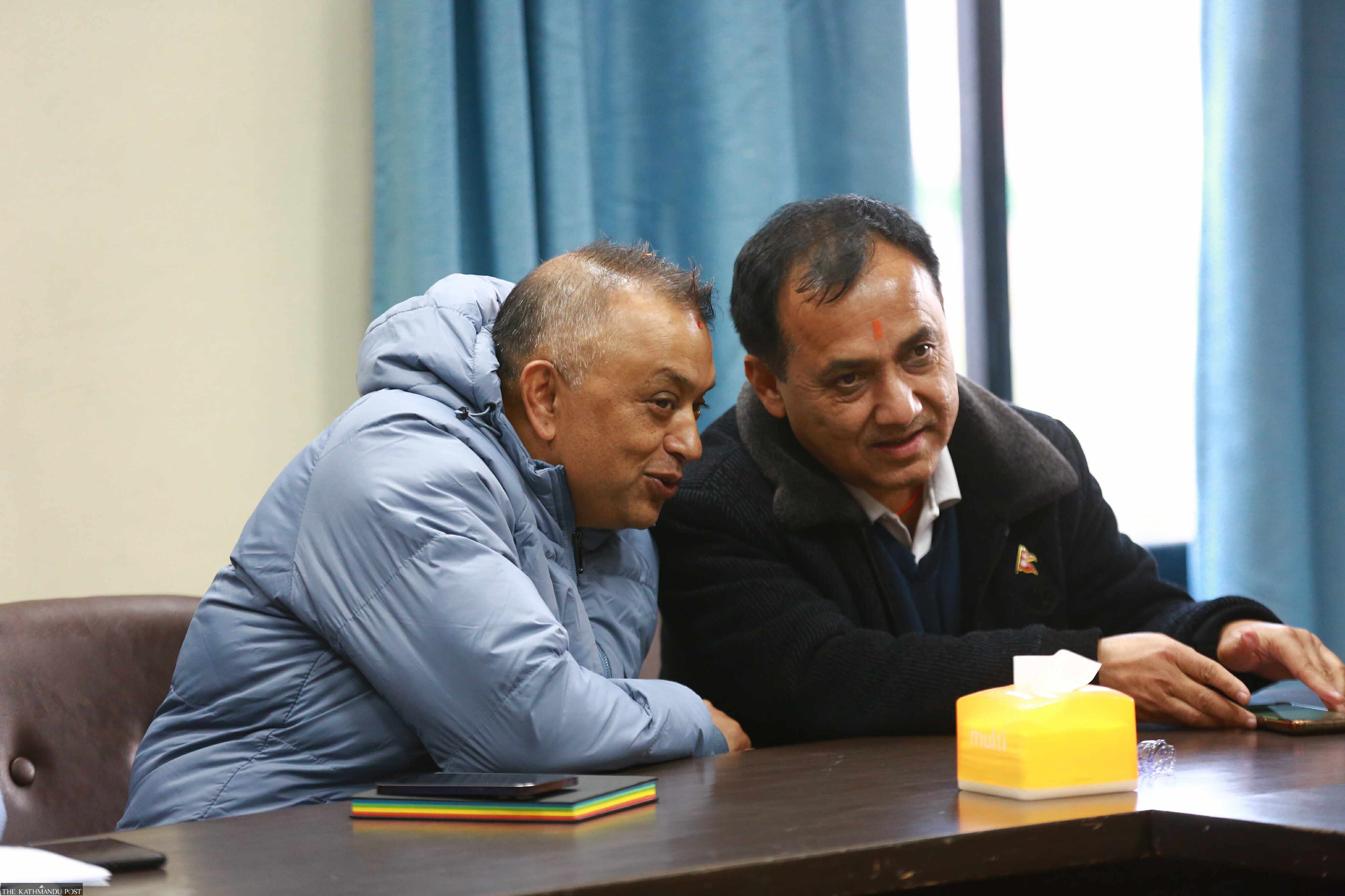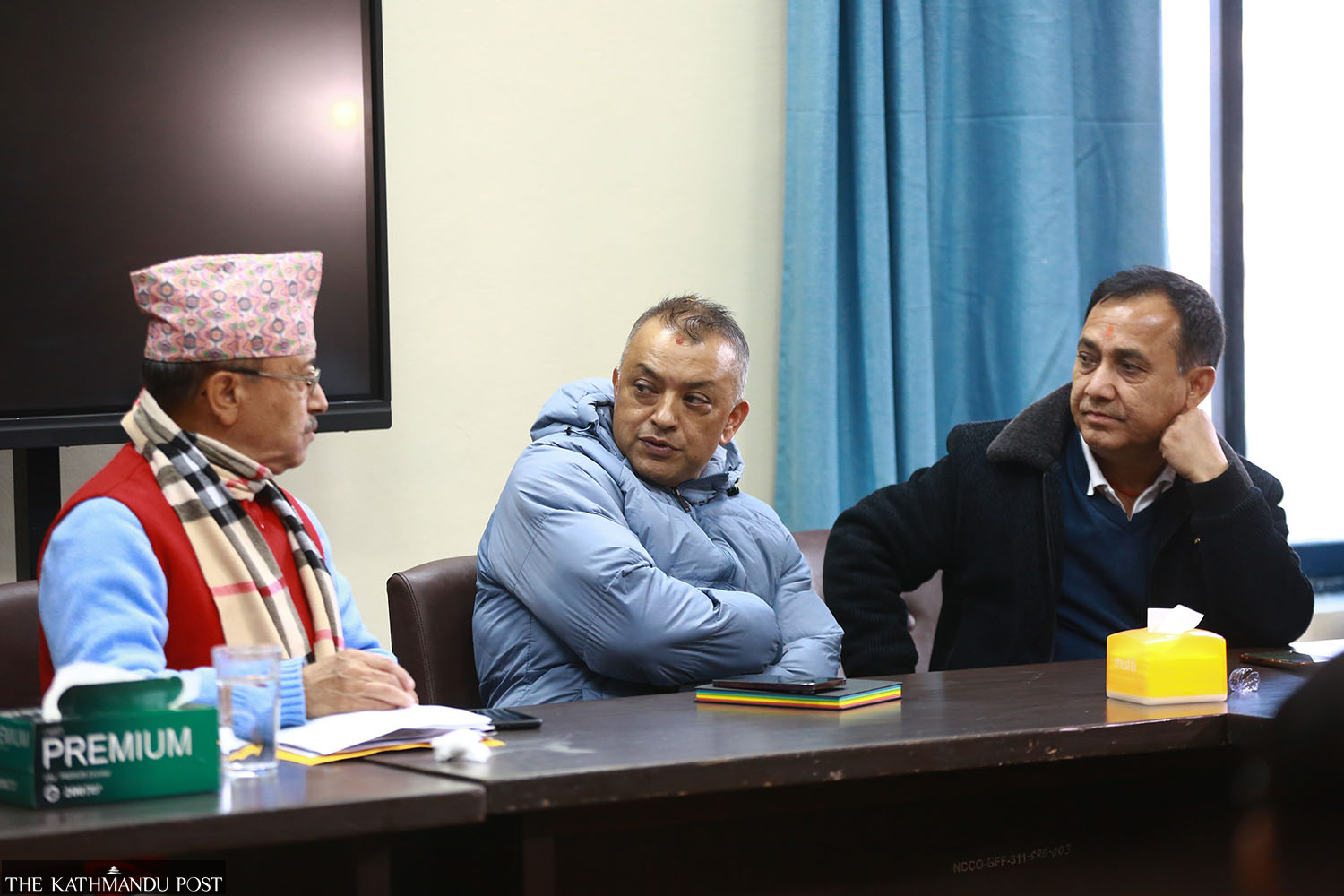Politics
Nepal Communist Party’s fragile unity falls apart
Factions led by Oli and Dahal are in bid to wrest control of the party, as both claim to have majority members on their side.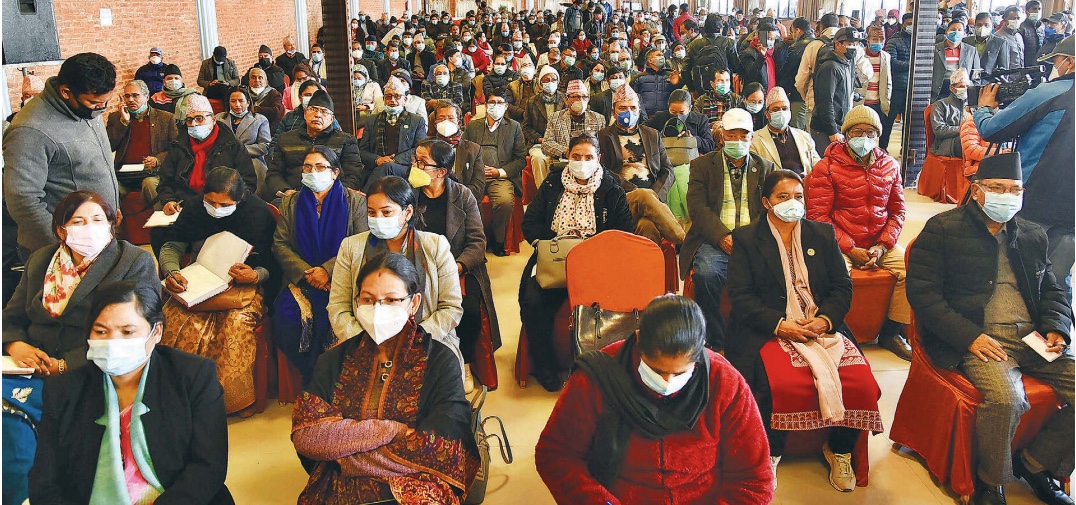
Tika R Pradhan
Many may not agree that the day KP Sharma Oli’s CPN-UML and Pushpa Kamal Dahal’s CPN (Maoist Centre) announced merger, both had also sealed the fate of the Nepal Communist Party. Both the leaders, who assumed the post of party chair dividing power equally between them, were buoyed by the fresh election victory. They were least concerned about whether their tens of thousands of cadres and leaders of different ranks were indeed ready for the assimilation. The only thing they both could see then was power.
There were murmurs among cadres and leaders regarding the life of the newly formed Nepal Communist Party (NCP).
On Tuesday, 31 months after its formation, the Nepal Communist Party split. There, however, is no former UML or former Maoist party. There is Nepal Communist Party led by Oli and Nepal Communist Party led by Dahal.
Which faction has or will have the legal status is subject to the decision of the Election Commission—and if it fails to do so, the matter will be resolved by the court.
However, both factions continue to claim to be the legitimate Nepal Communist Party.
On Tuesday morning, Oli held a meeting of the Central Committee at Baluwatar attended by members loyal to him. He told the meeting that it does not harm the body when some furuncles are removed, indicating at Dahal and his comrades from the UML days, Madhav Nepal and Jhala Nath Khanal.
The Oli faction also constituted a 1,199-member general convention organising committee. It appointed Pradeep Gyawali as the party spokesperson in place of Narayan Kaji Shrestha, who is with the Dahal faction.
It then swiftly approached the Election Commission to register the changes made to the party statute.
In the meantime, the Dahal faction, at Karki Banquet, Babarmahal, held its own meeting of the Standing Committee, which “decided” to expel Oli as the party chair. In the afternoon, the Dahal group held a meeting of the Central Committee, dismissing the meeting held by Oli in the morning as “a gathering of a small faction”.
After expelling Oli through a disciplinary action as per the party statute, the Dahal faction’s Central Committee meeting unanimously decided to elevate senior leader Madhav Nepal to the party chair with equal status as Dahal.
Allegations and counter-allegations Oli and Dahal have been engaged in for the past few months continued on Tuesday as well.
Oli did not name but in what was quite apparent, he took a potshot at Dahal, saying some leaders were only focused on three things–money, position and family. “We had to go for the [House] dissolution because we cannot hand over the country to a person who only thinks about position, money and family.”
Oli said that despite giving the role of “executive chair”, Dahal did nothing to complete the unification process.
“Instead they prepared a no-confidence motion and planned an impeachment and even showed the audacity to expel the party chairman,” said Oli.
At his gathering, Dahal said Oli completely failed on the governance front and could not control corruption.
“And when it came to the party, we had to beg for party meetings,” said Dahal. “We carry the true spirit of the party unity. With us are all the former Maoist members and those senior leaders from then UML who led their party several times.”
Dahal argued that a two-thirds majority of members are with his faction.
The Dahal faction has claimed to have 315 Central Committee members on its side.

When the Nepal Communist Party had held its first Central Committee meeting on May 17, 2018, the day the party was announced, it had 441 central members.
As per the Political Parties Act, any faction with 40 percent of Central Committee members and 40 percent of Parliamentary Party members can register a new party.
Since there is no House now, the faction that goes to the Election Commission with the signatures of 40 percent of the total central members can split the party and have a new one registered.
It’s not that the Nepal Communist Party saw a spectacular implosion suddenly on Tuesday. It was in the making for quite some time. Oli, who is also the prime minister, however, hastened the process by suddenly dissolving the House of Representatives on Sunday.
After its merger, the party had decided to complete all the unification process within three months and hold its unity general convention within two years. But even after one year, the party was struggling to complete its unification process, as debate arose over the party’s ideology.
Then in May last year, Dahal started talking publicly about an agreement he and Oli had reached about leading the government in turns, much to the chagrin of Oli.
Dahal, a two-time prime minister, has had a bitter experience regarding power-sharing with Oli in the past as well. In 2016, Oli had refused to hand over the reins to Dahal, despite a gentleman’s agreement to that end. Dahal had then been forced to side with the Nepali Congress.
Oli’s refusal to abide by the new gentleman’s agreement prompted Dahal to forge an alliance with former UML leaders like Nepal and Khanal.
In November last year, Dahal managed to extract “executive chairman” for himself, but Oli never allowed him to exercise the authority the post entailed.
While Oli kept on running the party and the government unilaterally, he also relegated Nepal to fourth rank in the party, which further strengthened the bond between Dahal and Nepal.
The Dahal-Nepal faction over the months managed to garner the majority in all party committees–the Secretariat, the Standing Committee and Central Committee.
Oli gradually found himself cornered, and made some desperate moves, which boomeranged on him. In April this year, Oli issued two ordinances–one related to the Constitutional Council Act and the other to the Political Parties Act.
He withdrew them within five days after massive criticism. But the move sowed the seeds of suspicion in the Dahal-Nepal faction if Oli was trying to split the party.
As the tug-of-war continued between the two chairs, with a semblance of peace returning to the party once in a while, it was becoming untenable for both Oli and Dahal to remain under one roof.
“The only and main problem of our party is having two chairs,” said Janardan Sharma, a Standing Committee member, who had played a crucial role in saving the party from the brink of a split in September. “We should have realised long ago that two swords cannot fit into the same sheath.”
Dahal, who ran his Maoist party for three decades uncontested, was having a new experience in the Nepal Communist Party. Oli had reduced him to a ceremonial chair. Despite agreeing to let Dahal hold the post of “executive chair”, Oli never allowed him to exercise any authority. Insiders say Dahal was never comfortable under Oli’s thumb.
But Dahal’s lust for power, according to some members, was also not hidden from anyone. Since Oli was elected to lead the government for the full term, Dahal should not have formed an alliance against his own party leader, they say.
At the Baluwatar meeting on Tuesday, Oli levelled serious charges against Dahal, saying he was only focused on three things-- position, money and family.
Bitterness between Oli and Dahal in November reached a different level after both started to engage in nasty personal remarks.
Some second-rung leaders were trying to effect a patch-up but on December 15, Oli reintroduced the same ordinance related to the Constitutional Council Act which he was forced to withdraw in April. Despite agreeing to withdraw it at the party’s Standing Committee a day later, Oli refused to do so, inviting confrontation and setting the stage for a party split.
Then on Sunday, by dissolving the House, Oli drove the final nail in the coffin of the Nepal Communist Party.
Ghanashyam Bhusal, a Standing Committee member who resigned from the Oli Cabinet on Sunday, said Oli was fully responsible for the party split.
“I cannot explain in words such a level of planning for an explosive move of this extent [by Oli],” said Bhusal, referring to a series of actions Oli has taken in the recent past including the ordinance and the House dissolution. “Only if he had attended the party meetings and discussed his issues openly. No one would have stopped him from completing his term.”
Those who were trying to save the party say a split was coming along for quite some time but it was delayed because neither Oli nor Dahal wanted to be seen as the cause for the split. But by dissolving the House, Oli has to take the blame for the party split, according to leaders from the Dahal faction.
“But the worry is not just that a party has split,” said Bhusal. “The major concern is if we can save the political achievements. If the system remains, we can grow again.”
Mani Thapa, a Standing Committee member, summed up well the reasons behind the party split.
“The first and foremost reason why the party has arrived at this situation is when the party announced merger, it was never a unity of ideologies,” Thapa told the Post.
“Then there were some other reasons. There was always conflict between Oli and Nepal. There were issues among the former Maoists. The party like any other Nepali communist party lacked intra-party democracy. Last but not the least, Nepali communists don’t know yet how to run a government properly.”




 16.29°C Kathmandu
16.29°C Kathmandu
